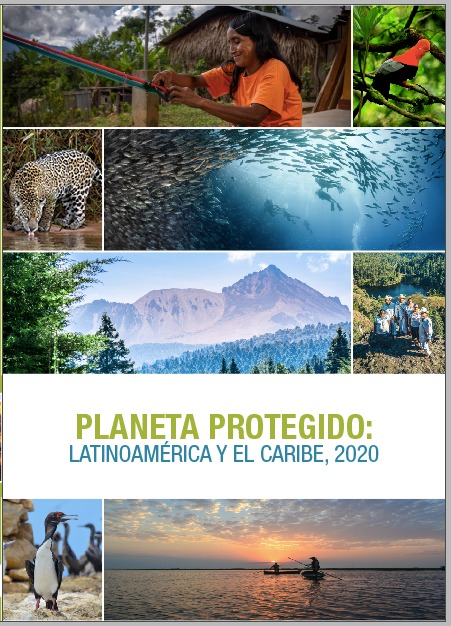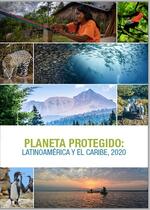The Latin America and Caribbean Protected Planet Report 2020
Released on 28 April 2021, this report analyses the progress in the fulfillment of the components of Aichi Target 11 of the Convention on Biological Diversity in 51 countries and territories of Latin America and the Caribbean. This endeavour brought together 58 authors from more than 40 organisations between governments, academic institutions, national and international NGOs, and international cooperation agencies.

Latin America and Caribbean Protected Planet Report 2020
Photo: RedParques
 Latin America and Caribbean Protected Planet Report 2020
Photo: RedParques
Latin America and Caribbean Protected Planet Report 2020
Photo: RedParques
On 28 April 2021, RedParques* (with Regional Coordination in CONANP Mexico), UNEP-WCMC, IUCN-WCPA, WWF, and the IAPA Amazon Vision Project presented the results and recommendations by experts that will facilitate protected and conserved areas decision-making on the next decade.
The report shows strengths and weaknesses of the region, as well as the opportunities for action that will allow a coordinated approach to the challenges of Latin America and the Caribbean to stop biodiversity loss in protected and conserved areas.
It is to date, the most complete report on the state of compliance of the Latin American and Caribbean countries towards Aichi Target 11. Its primary source of information is the World Database of Protected Areas (WDPA) as of July 2020 and is complemented by regional sources.
Report Findings
With more than 8.8 million km2 in terrestrial and marine protected areas, Latin America and the Caribbean is the most protected region in the world, in terms of coverage (without considering the polar region). This is equivalent to 21.4% of the total area protected by LAC (24% of terrestrial areas and 19% of marine and coastal areas), a coverage greater than Brazil or the sum of Argentina, Mexico, Peru, Colombia, Bolivia and Paraguay.
A total of 2,300 Key Biodiversity Areas (KBA) have been identified in LAC, covering more than 3.2 million km2. 21.2% of these KBAs are covered by protected areas, which represent 56.2% of the total KBA area in the region. On the other hand, 43.8% of KBAs do not have any degree of protection under protected areas.
Despite the great effort to meet the coverage component of Aichi Target 11, protection is not representative in terms of ecological biodiversity. Only half of the biomes present in LAC reach or exceed 17% protection. Some biomes, such as the Mediterranean forest and scrub or temperate grasslands and savannas, are particularly underrepresented in the region. In LAC there are 24% of the terrestrial ecoregions and 19% of the marine ecoregions of the world. It is suggested then to evaluate the representativeness of its protected region, in terms of the protection status of regional species and endemisms.
In terms of connectivity, the vast majority of LAC countries are still in the process to meet the connectivity criteria of Aichi Target 11. Out of the 51 countries and territories in the region, only nine have more than 17% of their protected area coverage and connected. On average, 33% of the extension of these national systems of protected areas are not well connected, that is, approximately one third of the protected area in LAC corresponds to conservation islands.
The report also presents the diversity of functional governance models in protected and conserved areas existing in the region and exposes the need to generate institutional and legal mechanisms to recognise them and make them operational.
Finally, it calls for action by joining efforts to achieve a more effective and inclusive conservation. It invites to significantly increase financial resources for protected area systems, improve evaluations of management effectiveness in a systematic way, as well as to improve the working conditions of park rangers.
Without protected and conserved areas, there is no sustainable future.
In a future marked by uncertainty, protected and conserved areas must be recognised as the main mechanism for conserving nature and ecosystem services. In these critical times, protected and conserved areas must have the enabling conditions to fully implement their conservation objectives and be recognised as catalysts of local development, with shared responsibility, that provide fundamental services for human health and survival.
* The Latin American network for Technical Cooperation in National Parks, other Protected Areas, Flora and Fauna Silvestre (RedParques), is a network with more than 35 years of experience integrated by 22 national systems of protected areas in Latin America and the Caribbean that seeks to improve the management of protected and conserved areas. More info: redparques.com



